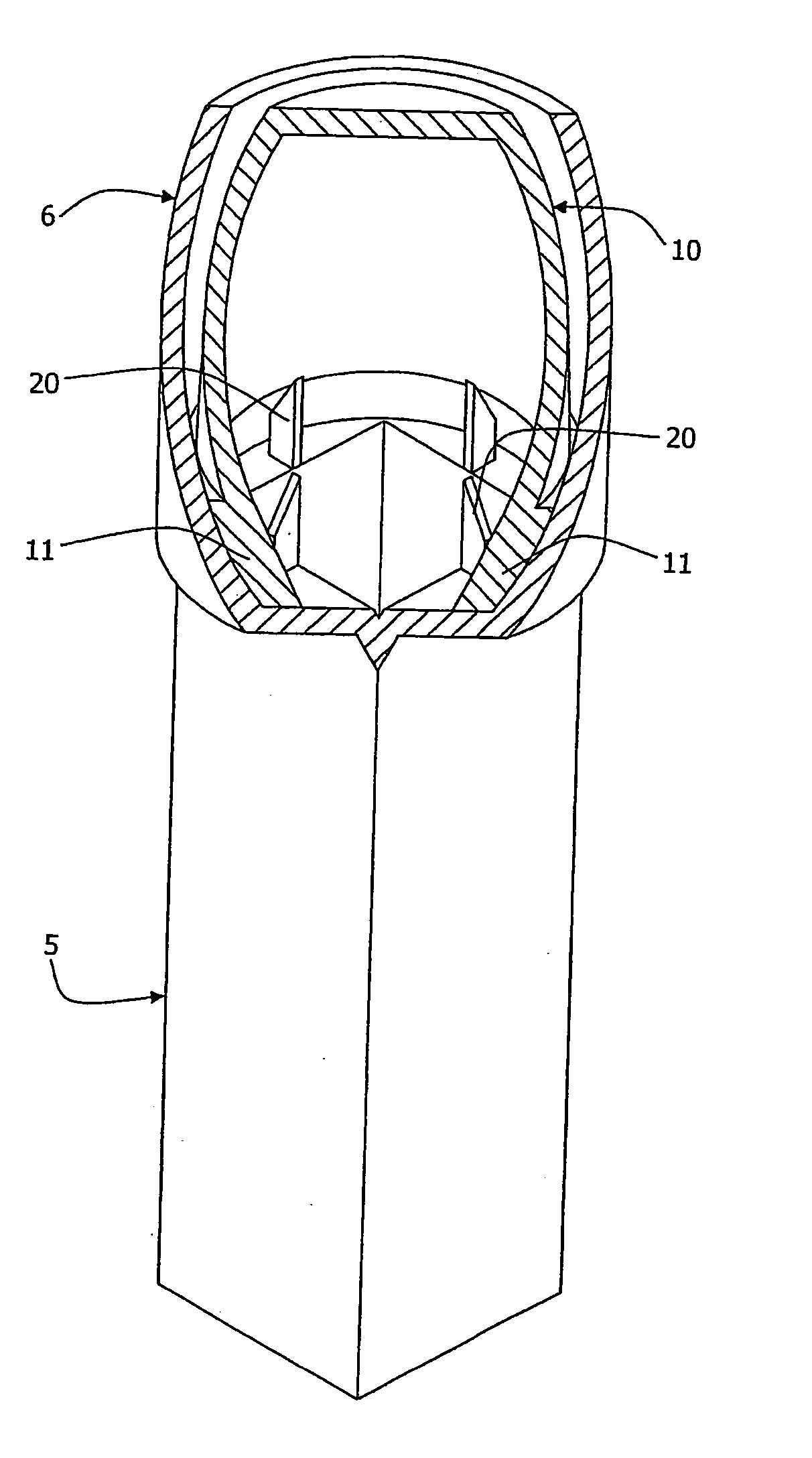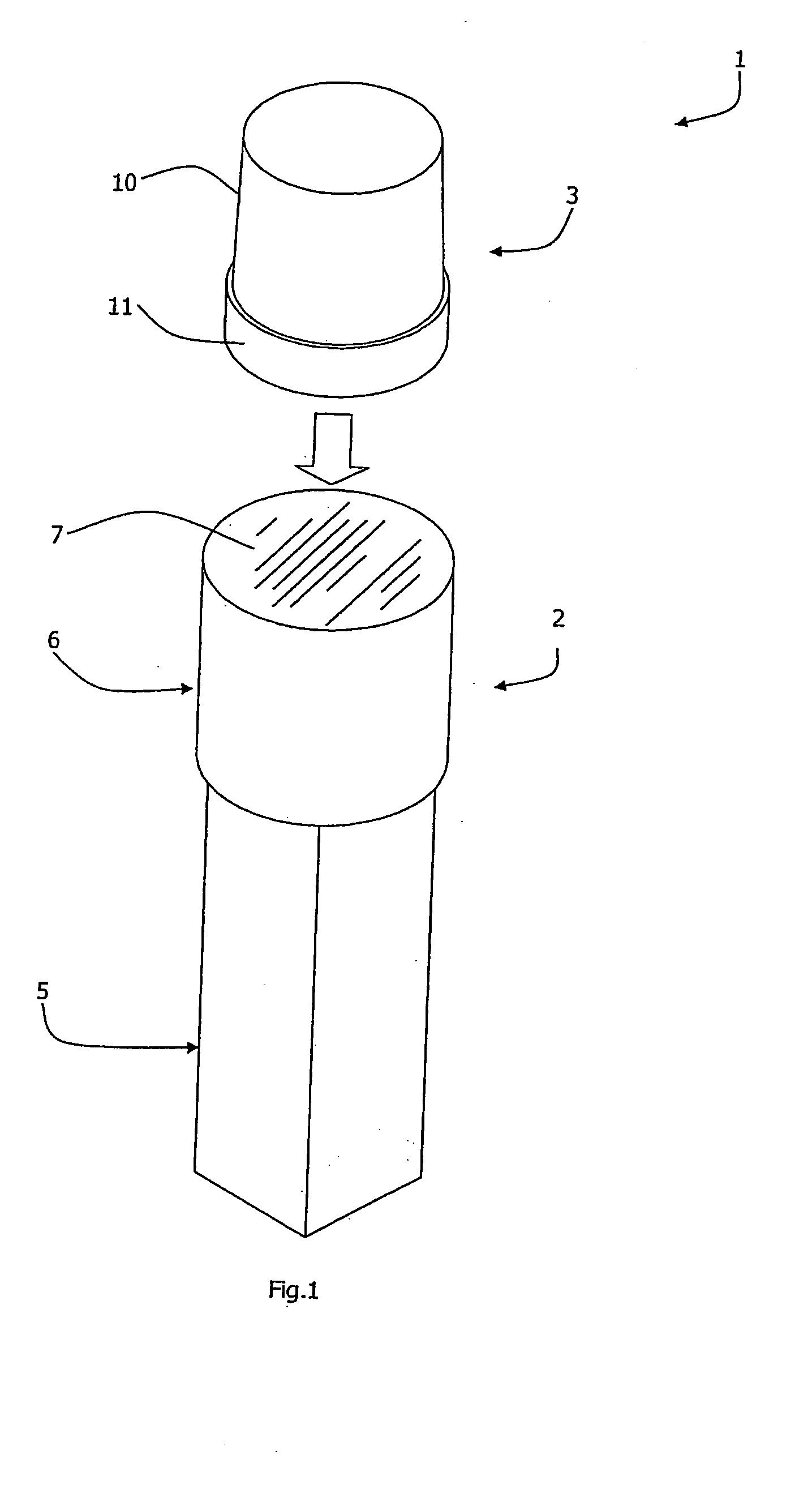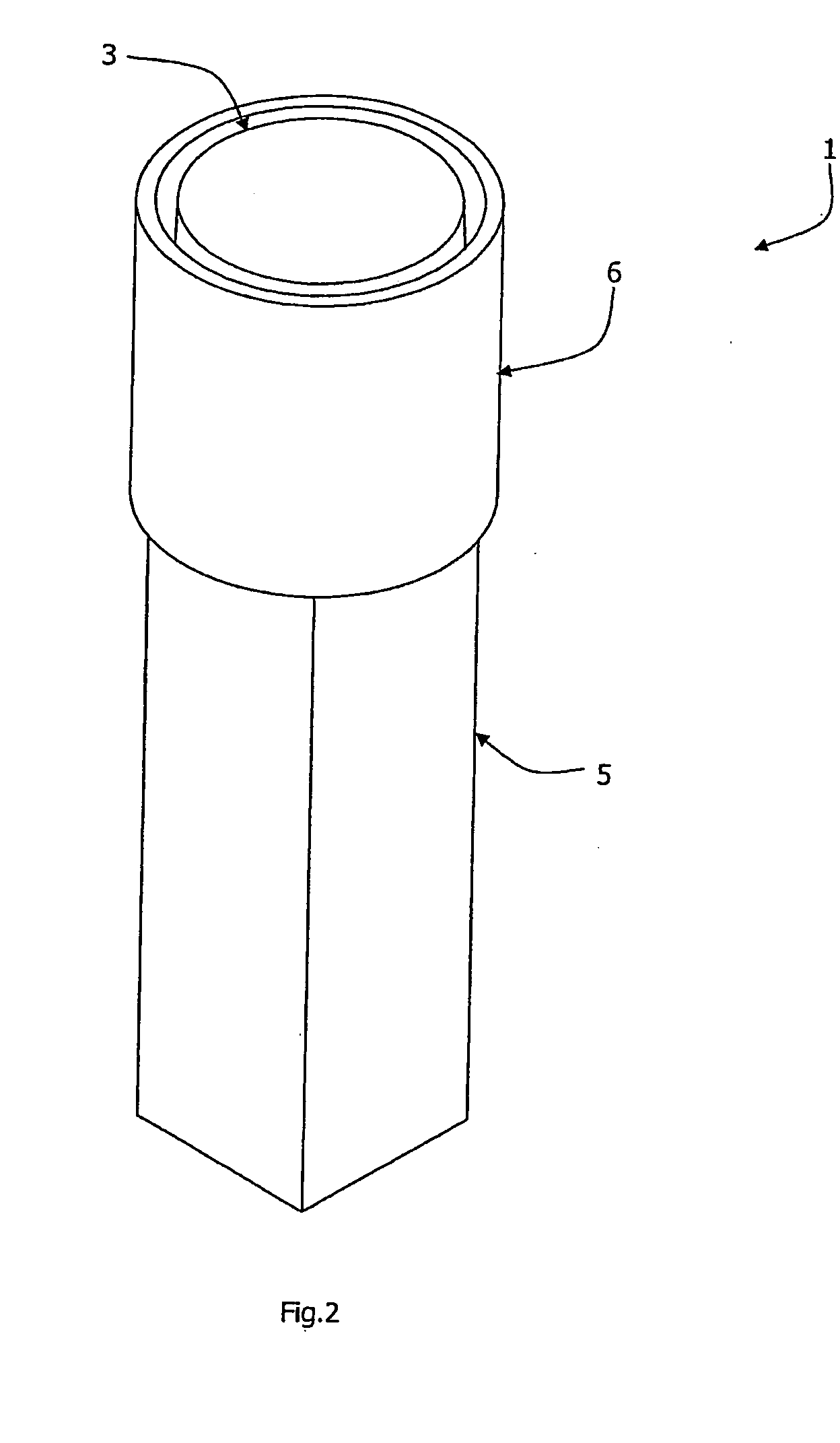Reagent cuvette
a technology of cuvettes and cuvettes, which is applied in the direction of biochemistry equipment, biochemistry equipment and processes, instruments, etc., can solve the problems of large number of patients being unnecessarily subjected to trouble and worry of further unwarranted tests
- Summary
- Abstract
- Description
- Claims
- Application Information
AI Technical Summary
Benefits of technology
Problems solved by technology
Method used
Image
Examples
Embodiment Construction
[0031] Referring to the drawings there is shown a reagent cuvette 1 for point-of-care analysis with laboratory accuracy. The cuvette 1 comprises two main parts, namely a first chamber 2 of approximately 64 mm height and a separate second chamber 3. The first chamber 2 and the second chamber 3 are of transparent plastics material. Both parts of the cuvette are of moulded plastics construction.
[0032] The first chamber 2 comprises an inspection part 5 and a socket 6 for receiving the chamber 3 in use, as described in more detail below. The inspection part 5 is of square cross-section, and extends for approximately two-thirds of the height of the chamber 2.
[0033] The socket 6 is of circular cross-section, tapering outwardly and upwardly at a small angle. It is wider than the inspection part 5, being connected to it by an integral shoulder. The chamber 2 is sealed by a foil membrane 7 extending across the top of the socket 6, and this seals in a buffer reagent supplied within the chamb...
PUM
| Property | Measurement | Unit |
|---|---|---|
| height | aaaaa | aaaaa |
| friction | aaaaa | aaaaa |
| thickness | aaaaa | aaaaa |
Abstract
Description
Claims
Application Information
 Login to View More
Login to View More - R&D
- Intellectual Property
- Life Sciences
- Materials
- Tech Scout
- Unparalleled Data Quality
- Higher Quality Content
- 60% Fewer Hallucinations
Browse by: Latest US Patents, China's latest patents, Technical Efficacy Thesaurus, Application Domain, Technology Topic, Popular Technical Reports.
© 2025 PatSnap. All rights reserved.Legal|Privacy policy|Modern Slavery Act Transparency Statement|Sitemap|About US| Contact US: help@patsnap.com



